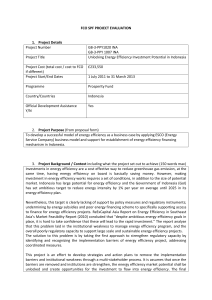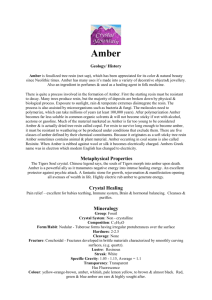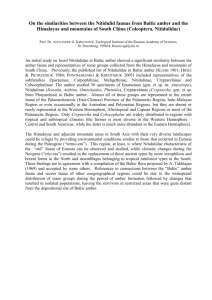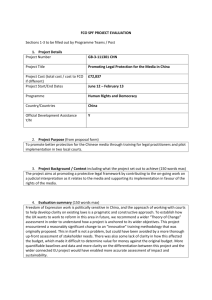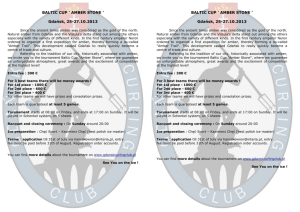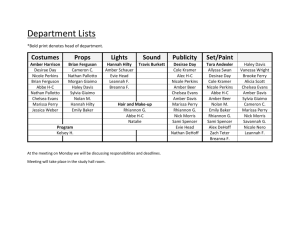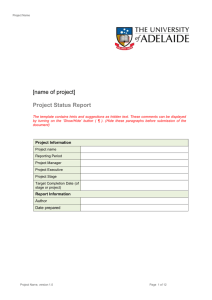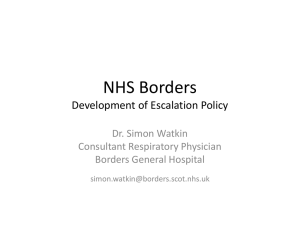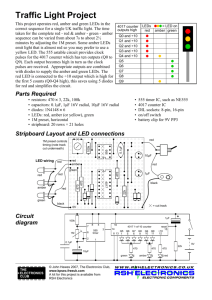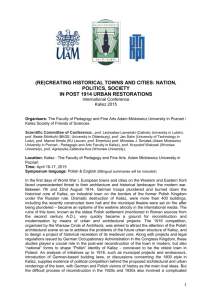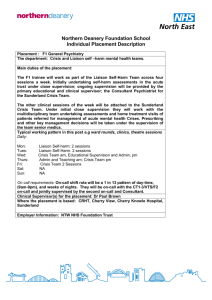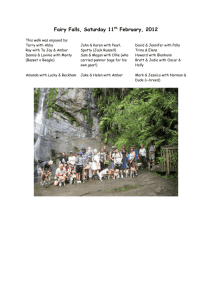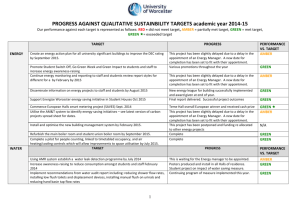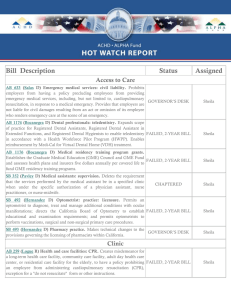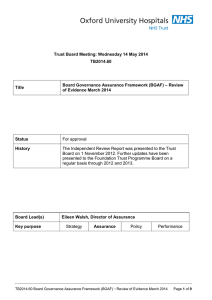Eco-challenge Competition test – 4th edition Part I – Test Earth Day
advertisement
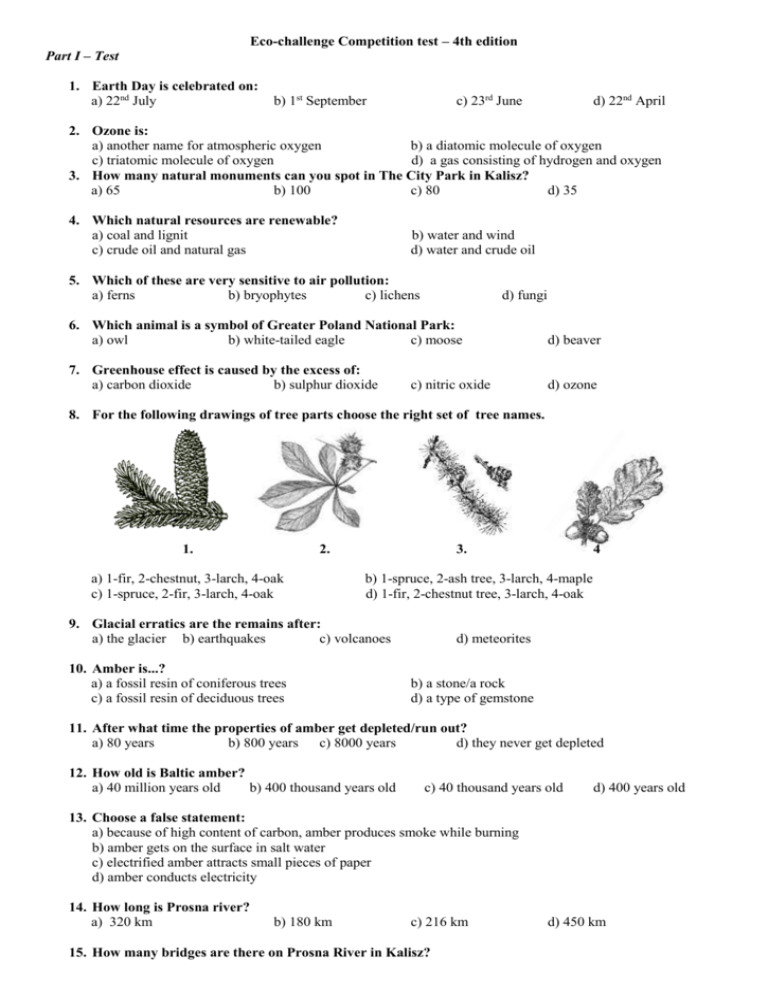
Eco-challenge Competition test – 4th edition Part I – Test 1. Earth Day is celebrated on: a) 22nd July b) 1st September c) 23rd June d) 22nd April 2. Ozone is: a) another name for atmospheric oxygen b) a diatomic molecule of oxygen c) triatomic molecule of oxygen d) a gas consisting of hydrogen and oxygen 3. How many natural monuments can you spot in The City Park in Kalisz? a) 65 b) 100 c) 80 d) 35 4. Which natural resources are renewable? a) coal and lignit c) crude oil and natural gas b) water and wind d) water and crude oil 5. Which of these are very sensitive to air pollution: a) ferns b) bryophytes c) lichens d) fungi 6. Which animal is a symbol of Greater Poland National Park: a) owl b) white-tailed eagle c) moose d) beaver 7. Greenhouse effect is caused by the excess of: a) carbon dioxide b) sulphur dioxide d) ozone c) nitric oxide 8. For the following drawings of tree parts choose the right set of tree names. 1. 2. a) 1-fir, 2-chestnut, 3-larch, 4-oak c) 1-spruce, 2-fir, 3-larch, 4-oak 3. 4 b) 1-spruce, 2-ash tree, 3-larch, 4-maple d) 1-fir, 2-chestnut tree, 3-larch, 4-oak 9. Glacial erratics are the remains after: a) the glacier b) earthquakes c) volcanoes 10. Amber is...? a) a fossil resin of coniferous trees c) a fossil resin of deciduous trees d) meteorites b) a stone/a rock d) a type of gemstone 11. After what time the properties of amber get depleted/run out? a) 80 years b) 800 years c) 8000 years d) they never get depleted 12. How old is Baltic amber? a) 40 million years old b) 400 thousand years old c) 40 thousand years old d) 400 years old 13. Choose a false statement: a) because of high content of carbon, amber produces smoke while burning b) amber gets on the surface in salt water c) electrified amber attracts small pieces of paper d) amber conducts electricity 14. How long is Prosna river? a) 320 km b) 180 km c) 216 km 15. How many bridges are there on Prosna River in Kalisz? d) 450 km a) 10 b) 18 c) 28 16. Which direction does Prosna River flow? a) northern b) north-eastern d) 45 c) north-western d) southern 17. What does the name ‘Bernardynka’ mean ? a) tributary of Prosna River b) artificial water reservoir c) river canal 18. Which of these organisms are not producers: a) tinder fungus b) common polypody c) pine d) rye 19. What city can you reach without changing trains, directly from Kalisz? a) Gdynia b) Warszawa c) Katowice d) bridge on Prosna River d) Szczecin 20. Which locomotive is the most environment-friendly? a) diesel b) steam c) electric d) all answers are correct 21. The railways in Kalisz are: a) narrow gauge b) high-speed c) classic 22. What’s the right track/rail gauge in Poland? a) 1435 mm b) 2000 mm d) no right answer c) 850 mm d) 1980 mm 23. Which methods warning animals not to intrude on the railway tracks do you consider true? a) devices protecting animals from getting in the way of moving train installed in places where bigger mammal migratory routes intersect the railways b) warning scream of a jay c) bridges for animals and installing fences d) all above answers are true 24. Recycling signifies a process of: a) liquidation of very toxic industrial waste b) desulphurization of fumes c) reusing waste to produce new things d) protection of dying and endangered species 25. A symbol of Wildlife Protection League (LOP) is: a) buffalo b) moose c) wolf 26. In the vicinity of Kalisz you can find a protected plant. Which is it? a) mikołajek nadmorski - the sea holly b) szarotkę alpejska - edelweiss horsetail d) rosiczkę okrągłolistną - round-leaved sundew d) beaver c) skrzyp olbrzymi - great 27. What is not advisable to do next to motorways because of high concentration of lead in car fumes? a) grazing cows and growing vegetables b) planting flowers c) planting decorative shrubs d) planting decorative trees 28. The result of releasing CFCs into the atmosphere is … a) greenhouse effect b) ozone hole c) acid rain d) global warming 29. Acid rain can be a cause of: a) limiting the efficiency of the process of photosynthesis b) destruction of the building facades c) acidification of groundwater d) all mentioned phenomena

